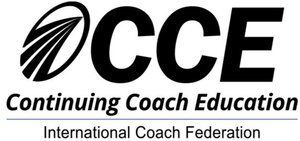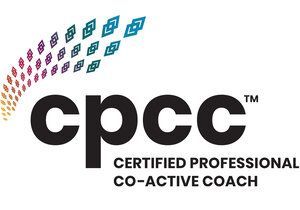The Holistic Approach to Addiction Recovery: Sound Healing and Yin Breathwork at Elemental Wellness

At Counseling Perspective, we understand that addiction is a complex issue that requires a holistic approach to achieve sustainable and lasting recovery. We approach addiction through a compassionate counseling, recognizing it as a nuanced and intricate challenge that touches on various aspects of an individual's life, including psychological, emotional, physical and spiritual dimensions.
Our approach is rooted in understanding the underlying emotional and psychological factors contributing to addiction, and we emphasize the importance of holistic healing. As we believe more holistic and spiritually mindful approach to mental health, our dedicated wellness team, Elemental Wellness, offers a wide range of complementary holistic therapies designed to nurture every facet of an individual's life, promoting harmony, inner peace, and a deeper connection to oneself alongside our counselling services. This integrated approach allows us to support our clients more fully, encouraging balanced and fulfilled living achieving the “wholeness”.
At Elemental Wellness, we incorporate sound healing and Yin Breathwork into our holistic approach to enrich physical and emotional healing while fostering spiritual growth and connection. This comprehensive method supports addiction recovery and enhances overall well-being, complementing our counseling services.
Sound Healing
Sound healing is a transformative therapy that harnesses the power of vibrational sound to restore balance and harmony within the body and mind. By using resonant instruments such as singing bowls, gongs, and crystal bowls, sound healing creates deep, harmonious vibrations that penetrate body cells and tissues, facilitating profound relaxation, emotional release, and mental clarity. This holistic practice promotes healing by addressing physical discomfort, reducing stress, and fostering spiritual growth, making it a powerful complement to traditional therapeutic approaches and a catalyst for overall well-being.
How does Sound healing help addiction recovery?
1. Reduces Stress and Anxiety:
Sound healing induces deep relaxation through soothing vibrations, helping to lower stress and anxiety levels. This relaxation can ease withdrawal symptoms and cravings, making the recovery process less daunting and more manageable.
2. Facilitates Emotional Release:
The resonant frequencies of sound therapy can help individuals access and process suppressed emotions and trauma. This emotional release supports the healing of underlying issues that contribute to addiction, complementing the insights gained through counseling.
3. Enhances Mindfulness and Self-Awareness:
Sound healing encourages mindfulness by bringing focus to the present moment through its rhythmic and harmonic qualities. This enhanced awareness helps individuals stay grounded, making it easier to implement coping strategies and insights from counselingsessions.
4. Promotes Spiritual Connection:
Many people in recovery seek a deeper sense of purpose and connection. Sound healing fosters spiritual growth and a sense of inner peace, providing a meaningful context that can strengthen an individual's commitment to recovery and personal transformation.
5. Supports Overall Well-Being:
By addressing physical and emotional imbalances, sound healing enhances overall well-being. This holistic approach complements counseling by supporting a balanced, integrated recovery process that nurtures both the mind and body.
Yin Breathwork
Yin Breathwork, rooted in Rebirthing Breathwork founded by Leonard Orr, utilizes conscious connected breathing to create a profound healing experience. This practice is a gentle style of breathing using only nasal breathing in a circular intentional pattern, inducing deep relaxation and emotional release. Unlike other breathwork styles that are holotropic forceful mouth breathing, Yin Breathwork values the importance of gentleness focusing on the breath’s natural flow thereby you can connect more deeply with your inner self, fostering a greater understanding of your emotions, thought patterns and spiritual well-being.
How does Yin Breathwork help addiction recovery?
1. Activation of the Parasympathetic Nervous System:
Deep, slow breathing activates the parasympathetic nervous system, promoting relaxation and counteracting the body’s stress response. Yin Breathwork lowers stress and anxiety levels. This reduction in stress can alleviate withdrawal symptoms and cravings, making the recovery process more manageable.
2. Facilitates Emotional Release:
The conscious connected breathing in Yin Breathwork helps release stored emotions and trauma. This emotional detoxification supports healing from the underlying issues that often contribute to addiction.
3. Enhances Mindfulness and Self-Awareness:
Yin Breathwork encourages mindfulness through connected breathing. This heightened self-awareness helps individuals recognize and address triggers and patterns associated with addiction.
4. Supports Emotional Resilience:
By fostering a deeper connection to oneself and enhancing emotional balance, Yin Breathwork builds resilience. This inner strength is crucial for navigating the challenges of recovery and maintaining long-term sobriety.
5. Promotes Physical Relaxation and Healing:
Conscious breathing techniques enhance oxygen flow to the brain and body, supporting detoxification and improving overall physical health. The practice helps release physical tension and improves overall relaxation. This physical relaxation supports the body’s healing process and recovery from the impacts of addiction.
Both sound healing with Yin Breathwork can create a powerful synergy, amplifying the benefits of each practice. Sound vibrations can deepen the breathwork experience, while conscious breathing can enhance the receptivity to sound frequencies. In addition, these therapies can lead to profound spiritual experiences, fostering a deeper connection to oneself and the universe. This spiritual awakening can provide a sense of purpose and meaning, crucial for sustained recovery. Together, they provide a comprehensive approach to healing that addresses the mind, body, and spirit.
Holistic therapies like sound healing and Yin Breathwork offer a transformative approach to addiction recovery. By addressing physical, emotional, and spiritual needs, these practices foster deep healing and resilience. As the understanding and acceptance of holistic approaches continue to grow, more individuals can benefit from these powerful, integrative therapies on their journey towards sobriety and overall well-being.










